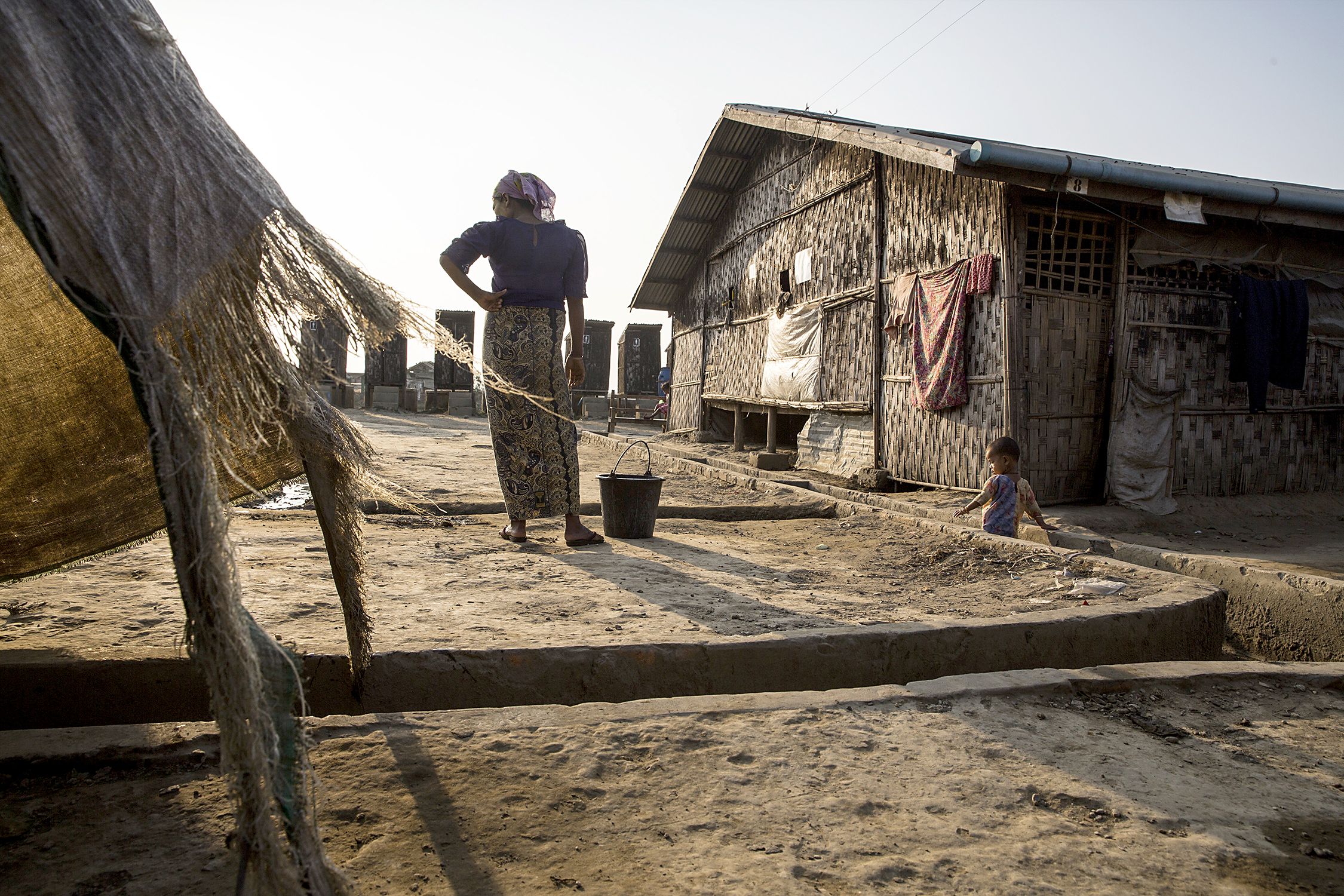
A woman and child in the internally displaced persons camps outside of Sittwe in Rakhine State, Burma. March 2015, courtesy of Paula Bronstein Getty Images Reportage for the US Holocaust Memorial Museum
Four years ago this August, Burmese military forces perpetrated brutal attacks on the Rohingya people, torching villages and decimating families. These attacks were part of the Rohingya genocide that has destroyed communities and forced more than 700,000 people to flee dangerous conditions there, with many crowded into refugee camps in Bangladesh. Burma’s Rohingya Muslim minority has suffered decades of government-led persecution, exclusion, and violence, including mass killing, torture, arson, and rape.
Hear Rohingya survivors and experts discuss the deadly risks still facing Rohingya in Burma today, and what can be done to prevent further mass atrocities and dehumanization of this community. We will also virtually tour the Museum’s latest special exhibition, Burma’s Path to Genocide. The event will be available in English, Rohingya, Burmese, and Arabic.
Speakers
Kyra Fox, Research Associate, Simon-Skjodt Center for the Prevention of Genocide, United States Holocaust Memorial Museum
Tun Khin, President, Burmese Rohingya Organisation UK
Naomi Kikoler, Director, Simon-Skjodt Center for the Prevention of Genocide, United States Holocaust Memorial Museum
Khin Maung, Founder and Executive Director, Rohingya Youth Association
Wai Wai Nu, Founder and Executive Director, Women's Peace Network
Yasmin Ullah, Independent Rohingya Social Justice Activist
Watch live at facebook.com/CenterForThePreventionOfGenocide. You do not need a Facebook account to view our program. After the live broadcast, the recording will be available to watch on demand on the Museum’s YouTube pages.
